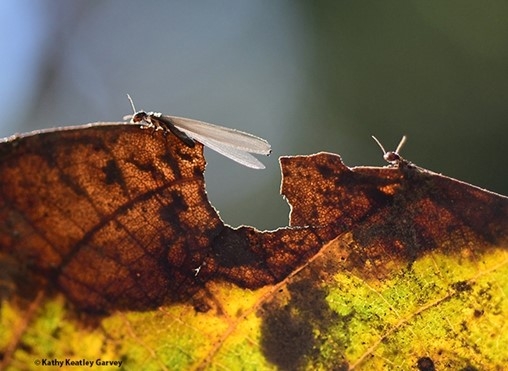For most of the Bay Area we had an unexpected but wonderful seasonal surprise – RAIN. This blessing provided a drink of water to plants that we have had to ignore due to water rationing.
We were not the only ones waiting for that first seasonal rain. Subterranean termites were waiting for that cue to emerge from the soil and party. Winged reproductives leave the underground nest in swarms to seek out a mate and then search for a new nest site. You may have seen them flying in swarms or on the ground exiting or landing on the soil.
They generally fly less than 300 feet from their emergence point. Their goal may be thwarted though, as this ritual exposes them to predation by birds, reptiles, spiders, and other insects. Most of the reproductives don't survive the feeding frenzy.
The most common subterranean termites, Reticulitermes, can be encountered in nearly all regions of the state. It can swarm in fall or spring and both situations are warm days following rain. They are not very big, less than one-half inch long including the wings, which are silvery-gray and twice the length of the body itself.
When not involved in the mating ritual, they live in the soil. Subterranean termites require a moist environment, and living in the soil and feeding in dead and decaying wood meets that need.
Termites are decomposers which benefit the environment. Unfortunately for us, dead wood includes structural lumber of which our homes or outdoor structures are made.
Since most soil around a home has buried wood debris (roots, stumps, or fence posts), finding swarming termites in your yard doesn't necessarily mean your house is infested. If you see a swarm on your property, do you have a problem? Possibly.
Andrew Sutherland, University of California's Urban Integrated Pest Management Advisor for the Bay Area, wrote in his blog: “If observing a swarm on your property, especially if near your home or other structures, you can hire a professional termite company for a detailed inspection. Make sure to photograph or otherwise note the swarm location so that the inspector can start there.”
If you would like additional information on subterranean termites, including recognizing their activity in and around the home and management options, check out the following link to UC IPM's Pest Note titled Subterranean and Other Termites.
http://ipm.ucanr.edu/PMG/PESTNOTES/pn7415.html
Help Desk of University of California Master Gardener Program of Contra Costa County (EDC)

